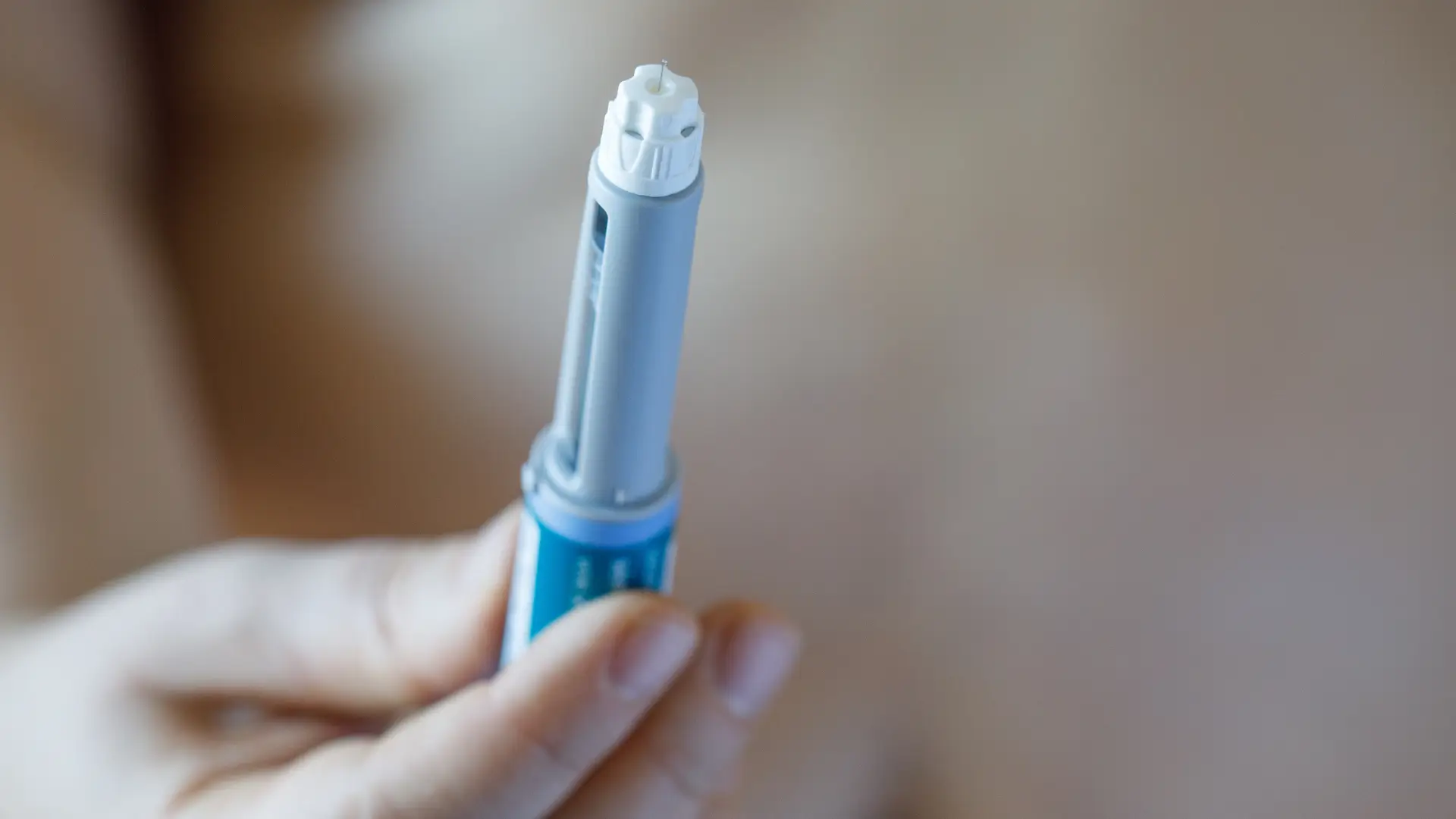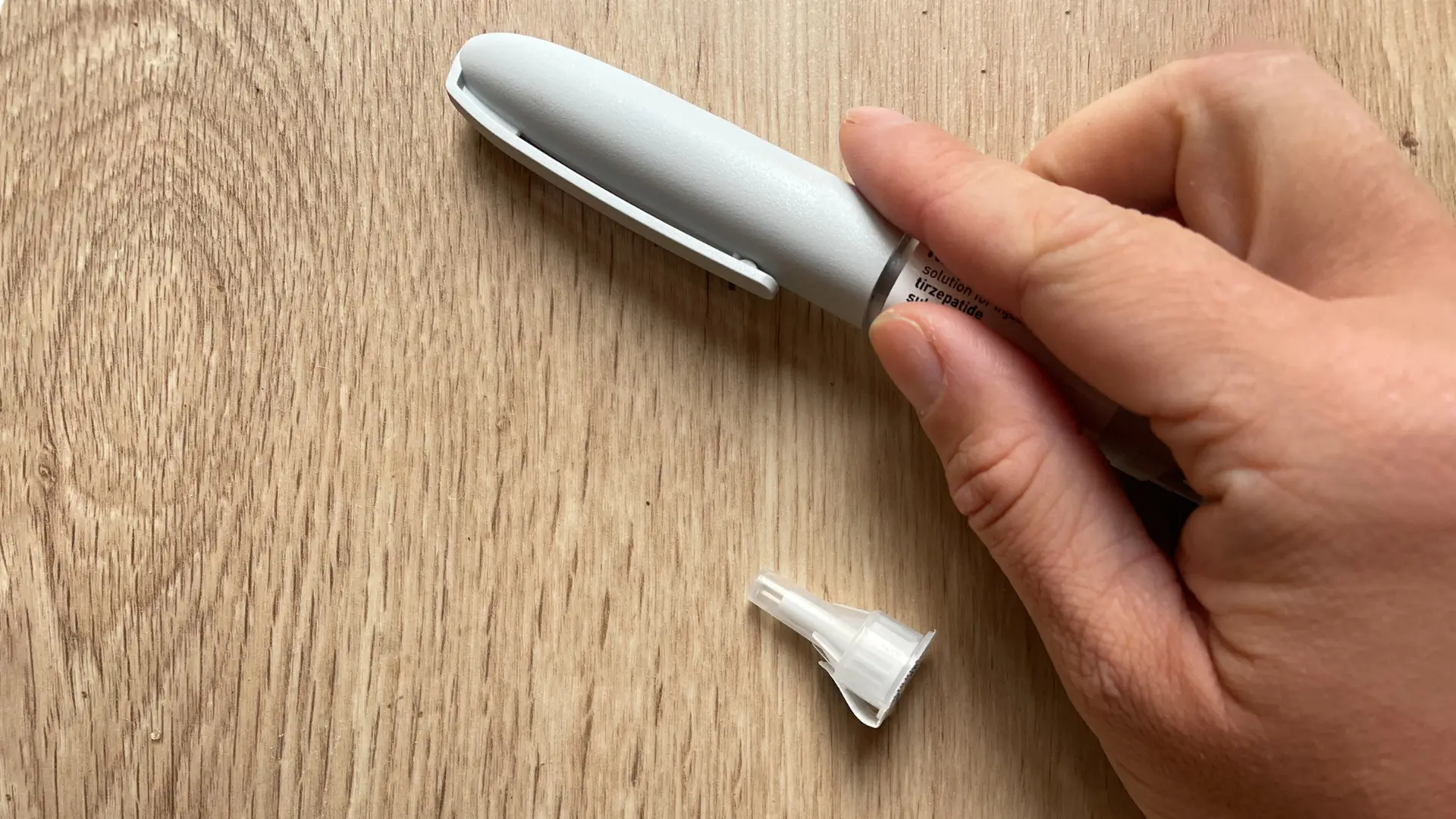By the end of 2023, more than 4 million Americans were prescribed glucose-lowering medications like tirzepatide — better known by its brand drug name, Mounjaro. This surge in use, just over a year after its FDA approval in May 2022, highlights growing trust in its effectiveness and safety.
What sets tirzepatide apart is its dual action as a GIP and GLP-1 receptor agonist, making it a powerful tool for both blood sugar control and weight loss. Sold as Mounjaro for type 2 diabetes and Zepbound for weight management, this drug medication has quickly become a go-to option for managing metabolic health.
In this article, we’ll explore the science behind tirzepatide, break down key clinical trial results, explain how Mounjaro is prescribed and administered, and share practical insights for choosing and monitoring the right patients.
Key Takeaways
- Mounjaro is the brand name for tirzepatide, a first-in-class dual GIP and GLP-1 receptor agonist approved for type 2 diabetes management and, under the name Zepbound, for weight loss.
- There is currently no FDA-approved generic version of tirzepatide; only the branded products Mounjaro and Zepbound are available.
- The active ingredient tirzepatide’s mechanism supports glycemic control, reduced appetite, and weight loss by activating two key incretin pathways — offering greater clinical benefits than traditional GLP-1 therapies.
- In SURPASS trials, tirzepatide led to A1C <7% in up to ~90% of participants and average weight loss of ~15–25 lbs, depending on dose and trial duration.
- Prescribing Mounjaro requires careful patient selection, starting with a low weekly dose and gradually increasing based on tolerance and clinical response.
- Contraindications of tirzepatide Mounjaro include a personal or family history of medullary thyroid carcinoma or MEN 2. Common side effects involve mild to moderate GI symptoms.
- Ongoing follow-up visits help providers assess treatment response, adjust doses, and support long-term patient success.
About: Medica Depot is your trusted all-in-one supplier, offering a range of high-quality medical injectables and supplies. If you’re looking to buy Mounjaro, contact Medica Depot’s sales representatives and they will guide you on how to do so. Whether for health professionals, plastic surgeons, dermatologists, licensed estheticians, or other specialists, we can offer genuine, brand-name products you may need. With Medica Depot, we prioritize serving you better to improve the patient’s quality of life.
Understanding Why Mounjaro Is Branded Tirzepatide
Mounjaro is the branded name for tirzepatide, developed by Eli Lilly. Regulatory agencies, including the FDA, recognize tirzepatide as the International Nonproprietary Name (INN), while Mounjaro is the trade name used for commercial prescribing, packaging, and marketing.
There is currently no FDA‑approved generic form of tirzepatide, nor are there drug biosimilars available in the U.S. or other major markets. The distinction between brand and generic matters for reimbursement, patient counseling, and labeling specific indications.
Interestingly, tirzepatide is now used in two branded therapies with different approved uses:
- Mounjaro: Indicated for improving blood sugar control in adults with type 2 diabetes.
- Zepbound: Uses the same peptide, tirzepatide, for chronic weight management.
How Tirzepatide Functions as the Active Ingredient in Mounjaro

For patients and providers asking, “What is Mounjaro made of?” — the answer lies in the novel mechanism of its active ingredient. Tirzepatide targets two incretin receptors, unlocking greater metabolic benefits than single-pathway GLP-1 therapies.
Key mechanisms include:
- Dual-Receptor Activation: Tirzepatide stimulates both GIP and GLP‑1 receptors in pancreatic beta cells, enhancing insulin release when blood sugar is elevated.
- Glucagon Suppression + Slower Gastric Emptying: It reduces glucagon levels and delays stomach emptying, which flattens post-meal glucose spikes.
- Appetite Regulation: Acting on central receptors in the brain, it helps reduce hunger, promoting clinically meaningful weight loss.
In head‑to‑head trials, the drug tirzepatide has demonstrated greater A1C and weight reductions than semaglutide 1 mg, confirming enhanced dual-pathway efficacy of Mounjaro.
Clinical Benefits of Tirzepatide Under the Mounjaro Brand

While knowing how to inject Mounjaro is important for practitioners, it’s equally essential to understand the treatment’s broader health impacts.
Across the SURPASS clinical trial program, once-weekly tirzepatide was shown to:
- Lower A1C to <7% in up to ~90% of patients at higher doses
- Produce average weight loss ranging from ~15 to 25 pounds by week 40, depending on Mounjaro dose and study group
- Deliver consistent metabolic improvements when paired with healthy lifestyle changes
These findings are part of why Mounjaro has become a standout therapy for patients struggling to reach glycemic targets on oral agents alone.
Prescribing Considerations for Mounjaro (Tirzepatide)

Healthcare providers should evaluate the full patient profile before initiating Mounjaro medications. This includes:
- Assess individualized A1C goals and review current diabetes treatments
- Evaluate cardiovascular risk factors
- Exclude patients with a personal or family history of medullary thyroid carcinoma or MEN 2
- Discuss patient preference and ability to self-administer weekly injections
The recommended starting Mounjaro dose is 2.5 mg once weekly for four weeks. After that, it can be increased by 2.5 mg every four weeks, up to a maximum dose of 15 mg weekly. This gradual titration helps reduce gastrointestinal side effects.
Contraindications and Side Effects
Mounjaro (tirzepatide) medications should not be used in individuals with:
- Medullary thyroid carcinoma or multiple endocrine neoplasia syndrome type 2 (MEN 2)
- Known hypersensitivity to tirzepatide or any components in the formulation
According to clinical data, the most common side effects of Mounjaro include:
- Nausea
- Diarrhea
- Decreased appetite
- Vomiting
- Constipation
- Indigestion
- Abdominal discomfort
Providers should discuss the risk of thyroid C-cell tumors with patients, although this remains a rare concern based on preclinical models.
Follow-Up Sessions
Regular monitoring is key to treatment success. Providers should schedule follow-up visits during dose escalation and continue quarterly assessments once patients reach maintenance dosing.
During these visits, clinicians should monitor:
- A1C to evaluate glucose control
- Body weight changes
- Patient adherence, side effects, and lifestyle support
These check-ins ensure that patients receive the maximum benefit while minimizing risks during their use of Mounjaro.
Conclusion
Mounjaro, with the generic name tirzepatide, represents a new chapter in diabetes care. Its unique dual-incretin mechanism offers not just improved blood sugar control, but also substantial weight loss — two outcomes that are deeply linked in type 2 diabetes management.
Its success lies in thoughtful patient selection, gradual dose titration, and ongoing monitoring. As further research unfolds, tirzepatide’s role may expand — not just for diabetes, but also for broader cardiometabolic health.
FAQs
1. What is Mounjaro’s generic name, and what does it do?
The generic name is tirzepatide, used to manage blood sugar levels in adults with type 2 diabetes, and also for weight loss under the Zepbound brand.
2. How does tirzepatide work in the body?
Tirzepatide activates GIP and GLP‑1 receptors to increase insulin, reduce glucagon, slow gastric emptying, and decrease appetite.
3. What should patients expect when starting Mounjaro treatment?
Patients usually start with 2.5 mg weekly, then increase as needed. Side effects like nausea or diarrhea are possible but often subside with time.
References
Bradley S. Mounjaro statistics 2025. The Checkup. Published June 25, 2025. Accessed August 28, 2025. https://www.singlecare.com/blog/news/mounjaro-statistics-2025/
Eli Lilly and Company. A1C and Weight Change Results | Mounjaro® (tirzepatide). Lilly.com. Published 2022. Accessed August 28, 2025. https://mounjaro.lilly.com/hcp/a1c-weight#a1c-cross-trial









